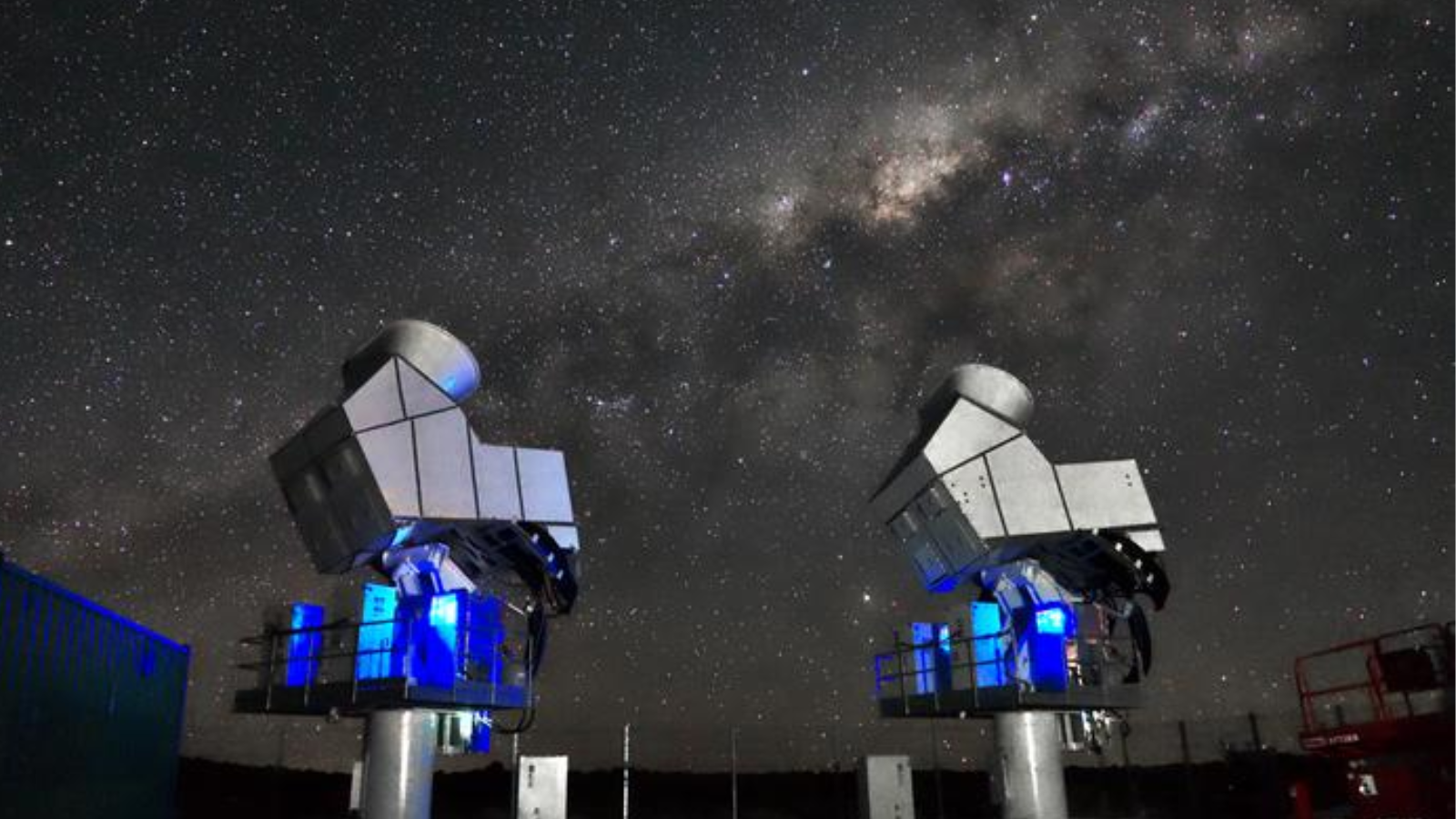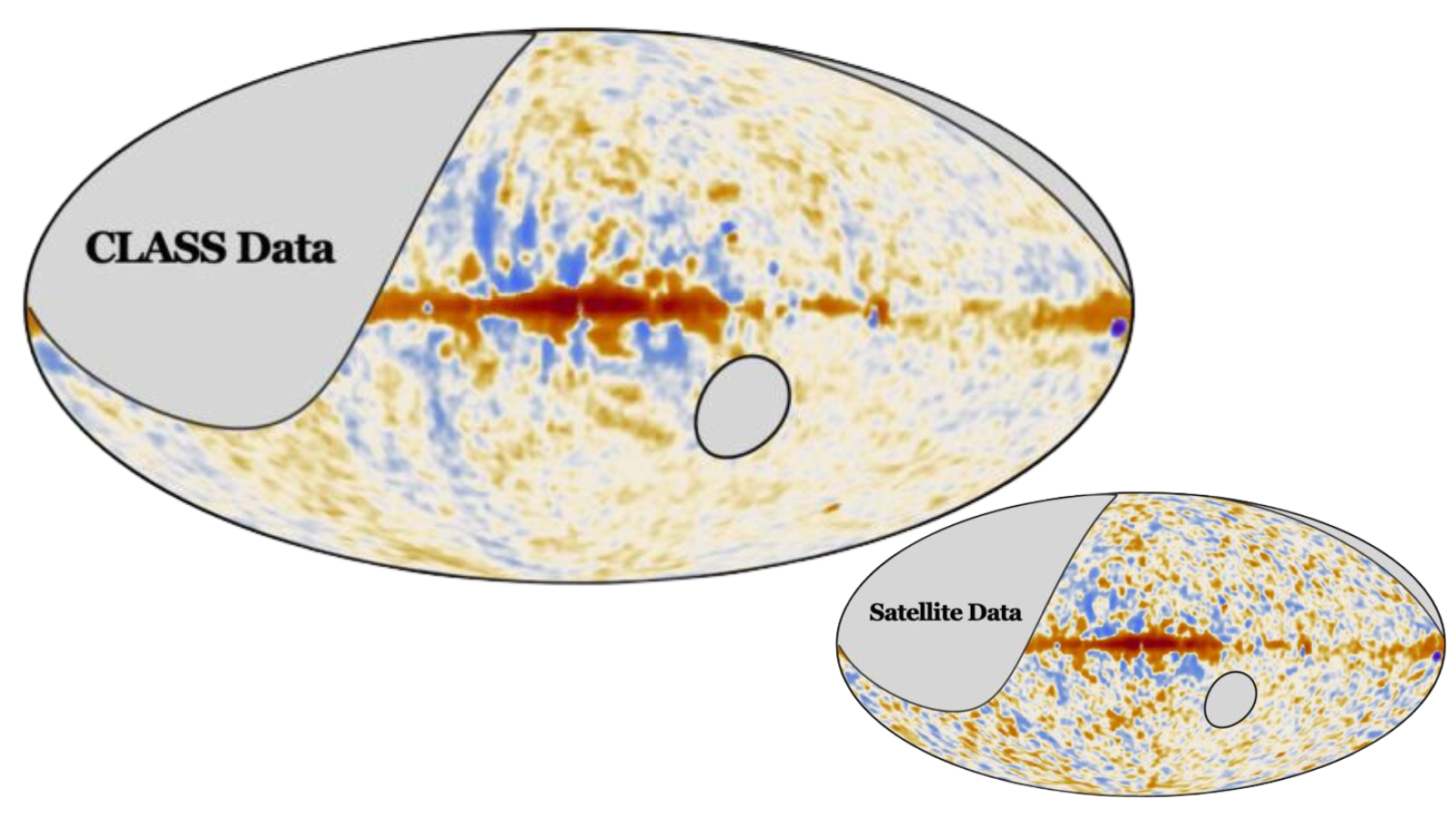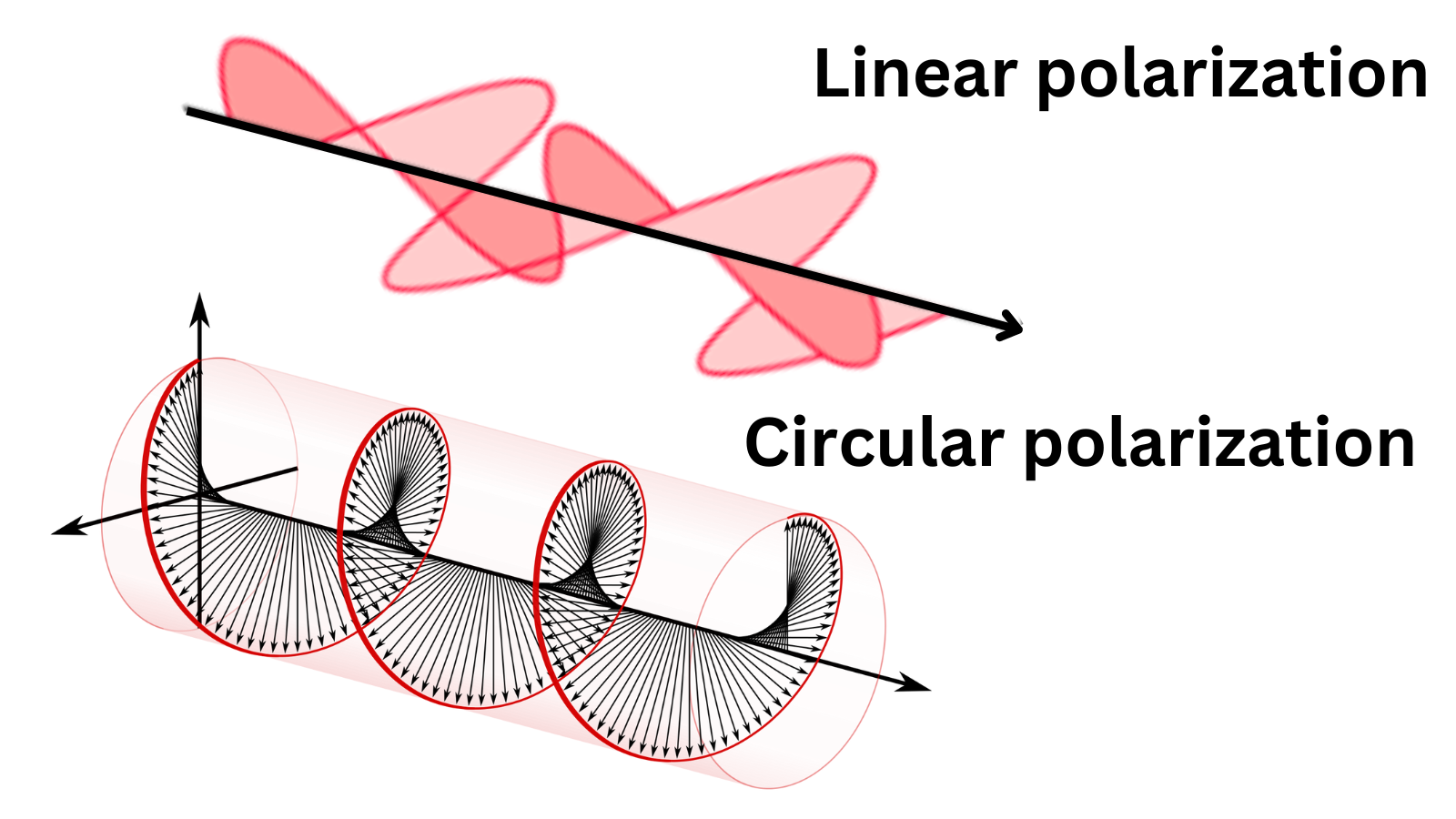
By measuring how energy waves wiggle in the sky over Earth, scientists have created a way to delve into the history of our 13.8 billion-year-old universe — starting right at its "first light."
The team, led by Johns Hopkins University astrophysicists, used an array of microwave telescopes called the Cosmology Large Angular Scale Surveyor (CLASS) to map 75% of the sky over Earth. This observatory is located in the Andes mountain range, some 16,860 feet above Chile's Atacama Desert.
The measurements made by CLASS have to do with "microwave polarization," associated with the direction in which waves of light are aligned. These measurements will help scientists filter a wavelength of radiation released from the Milky Way connected to the universe's first light, a celestial fossil called the "cosmic microwave background," or CMB.
"By studying the polarization of the CMB, astrophysicists can infer what the universe must have been like at earlier times," Tobias Marriage, team co-leader and Johns Hopkins professor of physics and astronomy, said in a statement. “Astrophysicists can go back to very, very early times — the initial conditions, the very first moments where matter in the universe and the distribution of energy was first put in place — and can connect all that to what we see today.”
Related: Surprise gamma-ray discovery could shed light on cosmic mystery
Decoding a cosmic fossil
The CMB is composed of remnant light from an event that occurred around 380 million years after the Big Bang during a period called the "epoch of recombination." Up until this point, the universe was filled with a hot, dense plasma that made it opaque. These so-called cosmic dark ages were caused by free electrons endlessly bouncing around particles of light called photons.
Then, the epoch of recombination began when the universe had expanded and cooled enough to allow electrons to bond with protons, create the first atoms and give rise to the universe's lightest and simplest element: Hydrogen. The sudden absence of free electrons meant photons were instantly free to travel, and the universe became transparent to light.
This first light is seen today as the CMB.
Because it dates back to when the universe was vastly denser than it is today, the CMB has been spread almost evenly throughout the cosmos. Still, tiny variations exist in the CMB, and because this radiation has been around for around 13.4 billion years, it is those variations that tell the story of matter and how its distribution has evolved. This includes the formation of the first stars, galaxies and galactic clusters.
"Studying the relic radiation from the beginning of the universe is critical for understanding how the entire cosmos came to be and why it is the way it is," Nigel Sharp, program director of the National Science Foundation's Division of Astronomical Sciences, which has supported CLASS for over a decade, said in the statement. "These new measurements provide essential large-scale details within our growing picture of variations present in the cosmic background radiation — a feat which is particularly impressive because it was achieved using ground-based instruments."

The CLASS maps grant insight into a microwave signal called linear polarization, which is emitted when light is confined to a single plane. The linear polarization of microwaves is the result of the Milky Way's magnetic field whipping electrons around at high speeds. This signal can thus help study the Milky Way — but it can also get in the way of investigating the early universe using the CMB.
By clearly mapping the microwave sky and allowing scientists to filter out linear polarized microwaves, CLASS could improve our understanding of the physical processes that existed in the early universe. Those processes would've been capable of creating a background of circular polarization. Circular polarization happens when light behaves as a two-dimensional transverse wave; it is distinct from linear polarization microwaves.

"It's very important to know the brightness of emission from our Milky Way galaxy because this is what we have to correct for to perform a deeper analysis of the cosmic microwave background," Joseph Eimer, research lead author and an astrophysicist at John Hopkins University, said in the statement. "CLASS is very successful in characterizing the nature of that signal so that we can recognize it and remove those contaminants from observations."
With the delivery of these new results, CLASS has set a new standard for mapping the polarization of light, breaking new ground for an observatory based on Earth that may need to contend with interference from our planet's atmosphere.
"The project is at the forefront of pushing ground-based polarization measurements in the largest scales," Elmer concluded.
The team's research was published on Feb. 26 in The Astrophysical Journal.







